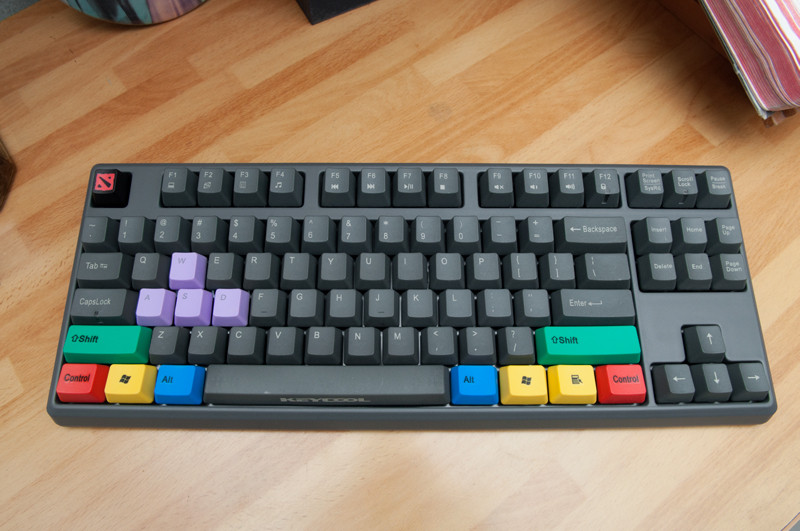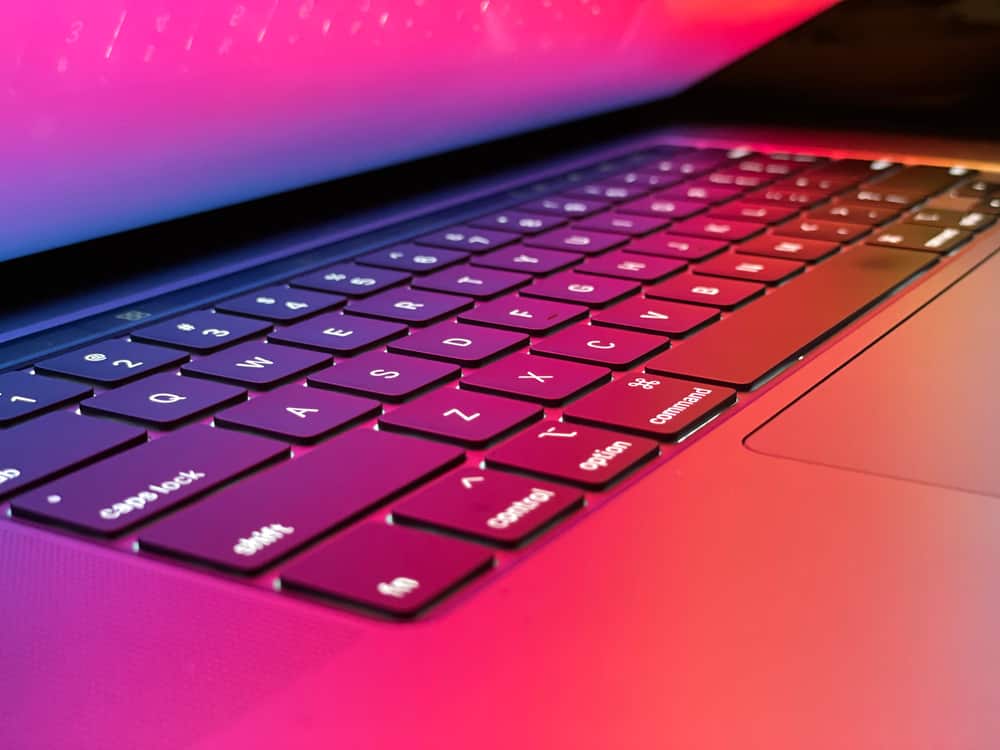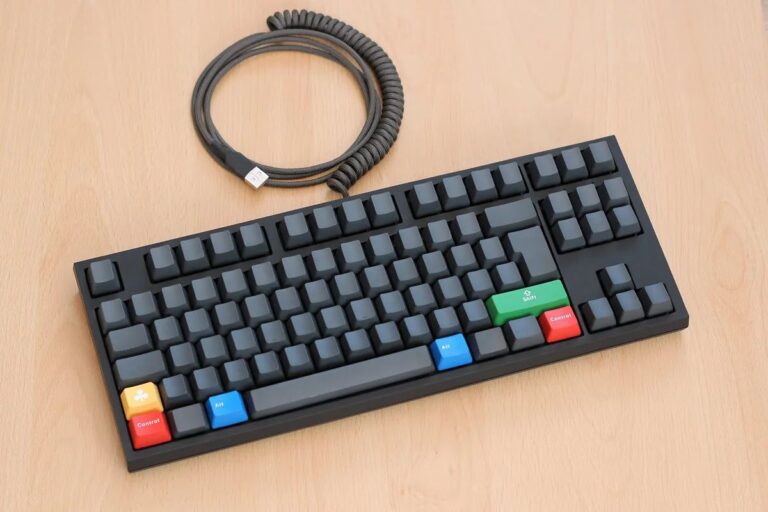On a standard computer keyboard, “RMB” typically stands for “Right Mouse Button.” It refers to the secondary button on a computer mouse, not a key on the keyboard itself.
The Right Mouse Button is used for various functions, including opening context menus and performing context-specific actions in software applications.
While many computer users encounter the term “RMB” in various contexts, such as software tutorials or online forums, it’s common for individuals to have a limited understanding of what it actually represents.
Let’s break down the concept of “RMB” and shed light on its significance in the realm of computing.
What Is RMB?

A. “RMB” and its significance in the context of keyboards.
“RMB” stands for “Right Mouse Button.” In the context of keyboards and computer input devices, it refers to the secondary button on a standard computer mouse, typically situated on the right-hand side.
This button plays a crucial role in user interaction with graphical user interfaces (GUIs) and is fundamental for various operations in the digital world.
The RMB serves as a vital tool for executing context-specific actions and navigating through digital environments with ease.
Its significance lies in its ability to trigger context menus, open additional options, and provide a versatile means of interacting with graphical elements on your computer screen.
B. The Relation of RMB to other keyboard shortcuts and functions.
The RMB is often used in conjunction with keyboard shortcuts and other mouse actions to enhance the efficiency of computer navigation and tasks. Its relation to other keyboard shortcuts and functions is critical for understanding its full potential:
Ctrl + RMB: Holding down the Control (Ctrl) key on your keyboard while clicking the RMB can invoke specific functions, such as opening links in a new browser tab or selecting multiple items in a list.
Shift + RMB: When combined with the Shift key, the RMB allows for the selection of a range of items or text within a GUI, making tasks like highlighting text or selecting multiple files in a file explorer much more manageable.
Alt + RMB: This key combination is often used to manipulate the view or perspective in various applications, such as 3D modeling software or games, where you can adjust the camera angle or viewpoint by holding the Alt key and clicking the RMB.
RMB Context Menus: Perhaps one of the most common uses of the RMB is to trigger context menus.
Right-clicking an item or area on your computer screen typically brings up a context menu with relevant options, allowing you to perform actions specific to that context.
The Function of RMB
A. The primary function of the RMB (Right Mouse Button) on a keyboard.
The primary function of the RMB, or the Right Mouse Button, on a keyboard is to provide a secondary method of interacting with your computer’s graphical user interface (GUI).
While the left mouse button (LMB) is used for the basic selection and activation of items, the RMB extends the mouse’s capabilities by offering context-specific actions and controls.
It allows you to perform different functions depending on where and how you click it.
B. The Role of RMB in controlling the cursor and accessing context menus.
Controlling the Cursor: The RMB plays a vital role in controlling the cursor on your computer screen. By moving the mouse while holding down the RMB, you can precisely navigate the cursor to select, highlight, or interact with objects, text, and icons.
This fine-grained control is especially useful when manipulating elements in graphic design software, editing documents, or performing intricate tasks.
Accessing Context Menus: One of the primary functions of the RMB is to access context menus. A context menu appears on the computer screen when you right-click on an item or specific area within a GUI.
This menu provides a list of actions or options relevant to the selected item or location. For instance, right-clicking on a link in a web browser may allow you to open it in a new tab or copy its URL.
In a file explorer, right-clicking on a file can enable you to delete, rename, or perform other file-related operations.
Context-Sensitive Actions: The RMB’s power lies in its ability to offer context-sensitive actions. It means the available options in the context menu can change depending on your right-click.
For example, right-clicking on a word within a text editor might provide spelling and formatting options, while right-clicking on an empty space on your desktop can offer display and customization settings.
Customization: In many software applications and operating systems, you can customize the behavior of the RMB to suit your preferences.
You can define specific functions or shortcuts that are triggered when you right-click, allowing for a personalized computing experience.
Keyboards with RMB
A. the types of keyboards that feature the RMB key.
Including a dedicated RMB (Right Mouse Button) key on keyboards is relatively rare. In fact, traditional computer keyboards typically do not have an RMB key since the physical mouse itself handles the primary function of the right mouse button.
However, specialized keyboards are designed for specific purposes that may incorporate additional mouse-like features, including an RMB key. These keyboards are commonly used in niche industries such as gaming or design:
Gaming Keyboards: Some gaming keyboards, particularly those aimed at gamers who prefer not to switch between the keyboard and mouse frequently, may come with additional buttons or even a trackball that can function as an RMB.
These keyboards are designed to offer more control options for gaming and often allow users to program keys for specific actions.
Graphics Tablets and Design Keyboards: Graphics tablets and specialized design keyboards used by digital artists and graphic designers sometimes include an RMB key.
This is to mimic the functionality of a stylus or graphics pen that can right-click, providing a seamless experience when working on digital art projects.
B. The presence of RMB in various keyboard layouts and designs.
The presence of an RMB key, when it does exist, can vary based on keyboard layouts and designs:
Gaming Keyboards: In gaming keyboards, the presence and design of an RMB key can differ greatly among brands and models. Some may have dedicated buttons labeled “RMB” or provide customizable macro keys that can be assigned to mimic the RMB function.
Graphics Tablets and Design Keyboards: Graphics tablets often have stylus pens with physical buttons that act as the RMB when pressed.
On design keyboards, the RMB function may be integrated into a specific key or accessible through a modifier key like “Ctrl” or “Alt” in combination with other keys.
Custom Keyboards: Enthusiast or custom keyboards may allow users to customize their layouts, so individuals can incorporate an RMB key if it suits their specific needs.
Practical Uses of RMB in Everyday Computing
A. The practical applications of the RMB in everyday computing.
The RMB (Right Mouse Button) plays a crucial role in everyday computing by offering a wide range of practical applications.
It enhances user interaction with graphical user interfaces (GUIs) and simplifies various tasks across different software applications. Here are some practical uses of the RMB:
Context Menus: Perhaps the most common use, the RMB opens context menus in numerous applications.
These menus provide a quick way to access relevant options, making it easier to perform specific actions without navigating through menus or memorizing keyboard shortcuts.
File Management: In file explorers or file managers, right-clicking files and folders allows you to copy, move, delete, rename, or change properties quickly.
Web Browsing: While surfing the internet, you can use the RMB to open links in new tabs or windows, reload web pages, save images, and access browser-specific features.
Text Editing: In text editors and word processors, right-clicking can provide spelling and grammar suggestions, formatting options, and advanced text manipulation tools.
Graphic Design: Graphic design software often relies heavily on the RMB for tasks like selecting and manipulating objects, adjusting layers, and accessing design-specific functions.
3D Modeling and CAD: In 3D modeling and computer-aided design (CAD) software, the RMB is used to rotate, pan, zoom, and access modeling tools, making it essential for precise modeling work.
Gaming: In video games, especially those with complex interfaces, the RMB is used for actions like aiming, shooting, interacting with objects, and bringing up in-game menus.
Multitasking: On desktops and taskbars, right-clicking applications or icons allows you to access context menus for various actions, such as pinning programs, closing windows, or managing system settings.
B. Examples of tasks where the RMB is essential.
Image Editing: When working with image editing software like Adobe Photoshop, the RMB is essential for tasks such as selecting, cropping, and applying filters or adjustments to images.
3D Rendering: In 3D rendering and modeling software like Blender, the RMB is used for rotating and positioning objects, navigating 3D space, and accessing modeling tools.
Web Research: When conducting online research, you can use the RMB to open links in new tabs to review them later without losing your place on the current page.
Gaming: In first-person shooter (FPS) games, the RMB is often used for aiming down sights or zooming in for more precise shooting. In strategy games, it can access unit commands and context-specific actions.
File Organization: Managing files on your computer becomes more efficient with the RMB. For example, you can easily create folders, move files, and change file attributes.
Taskbar and System Tray: In the Windows operating system, right-clicking icons in the taskbar or system tray allows you to access options for running applications and system settings.
Web Navigation: In web browsers, the RMB can open links in new tabs, refresh web pages, and save web content for offline reading.
Customization and Shortcuts

A. How users can customize the RMB’s behavior on their keyboard.
Customizing the behavior of the RMB (Right Mouse Button) on your keyboard can enhance your computing experience and tailor it to your specific needs. Here’s how users can typically customize the RMB’s behavior:
Software Settings: Many operating systems and software applications allow users to customize mouse behavior, including the RMB, in their settings or control panels.
You can often adjust pointer speed, button functions, and more within these settings.
Gaming Peripherals Software: If you have a gaming mouse or keyboard with extra buttons, manufacturers usually provide software that allows you to customize button functions. You can assign specific actions or macros to the RMB or other buttons.
Keyboard and Mouse Macros: Some gaming peripherals and software utilities offer macro functionality. Macros are sequences of predefined actions that can be triggered with a single button press. You can create macros that involve RMB actions, such as complex spell combinations in games or repetitive tasks in software.
Third-Party Tools: Some third-party applications can help you customize your mouse and keyboard behavior, including the RMB. Tools like AutoHotkey or X-Mouse Button Control allow for extensive customization and scripting.
Accessibility Features: Operating systems often offer accessibility features that can assist users with disabilities. These features may include mouse button remapping and customizations to adapt to individual needs.
B. Share tips on creating shortcuts and macros with the RMB.
Creating shortcuts and macros with the RMB can significantly improve your productivity and streamline repetitive tasks. Here are some tips on how to do this:
Gaming Keyboards and Mice: If you have a gaming keyboard or mouse with dedicated software, use it to create macros incorporating RMB actions.
Software Macros: Many software applications, especially those used for programming or automation, allow you to create custom macros. Use these features to define RMB-based shortcuts for actions you frequently perform.
Third-Party Macro Tools: Consider using third-party macro tools like AutoHotkey (Windows) or Keyboard Maestro (macOS) to create complex RMB macros.
These tools allow you to script and assign custom actions to the RMB or any other keyboard or mouse button.
System-Wide Shortcuts: Some operating systems allow you to define system-wide keyboard shortcuts, including those involving the RMB. These shortcuts can be useful for quickly launching applications or performing specific functions without opening the program itself.
Consider Your Workflow: Analyze your daily tasks and workflow to identify repetitive actions that could benefit from RMB shortcuts or macros.
Whether it’s automating text insertion, opening specific folders, or controlling media playback, creating custom RMB shortcuts can save time and effort.
Documentation: Keep track of your custom RMB shortcuts and macros, especially if you create several of them. Documenting them in a text file or using the built-in features of macro software can help you remember and manage your customizations.
FAQs
Is “RMB” a common key on standard keyboards?
No, “RMB” is not a common key on most keyboards.
What does “RMB” stand for?
“RMB” typically stands for “Right Mouse Button,” which is a button on computer mice, not keyboards.
Is “RMB” used for typing letters or numbers?
No, “RMB” is not used for typing letters or numbers. It is used for mouse interactions, such as right-clicking on icons or files.
Can you find the “RMB” key on a keyboard?
No, you will not find an “RMB” key on a keyboard; it is exclusively associated with computer mice.
What are the functions of the right mouse button (RMB)?
The right mouse button is used for various functions, including accessing context menus, opening options, and performing secondary actions in software and applications.
Can the right mouse button be customized for specific tasks?
Yes, the functions of the right mouse button can be customized or configured in some software and operating systems.
Is the right mouse button essential for using a computer?
While not essential, the right mouse button is a valuable input tool for performing specific actions efficiently.
What are some common right-click actions?
Common right-click actions include copying and pasting, opening properties, renaming files, and accessing formatting options.
Can you use the right mouse button to interact with files and folders?
Yes, right-clicking on files and folders allows you to access a range of options for managing and interacting with them.
Can you perform a right-click action on a touchpad or laptop trackpad?
Yes, most touchpads and laptop trackpads support right-click functionality through tapping or multi-finger gestures.
Conclusion
In conclusion, understanding and effectively utilizing the Right Mouse Button (RMB) on your keyboard can significantly enhance your efficiency and productivity in various computing tasks.
Whether you’re simplifying everyday operations, accessing context-specific options, or enjoying smoother gaming experiences, the RMB is a powerful tool.
You unlock its full potential by customizing, creating shortcuts, and troubleshooting when needed. Embrace its versatility and empower your computing journey—it’s a small button with a big impact on your digital world.

